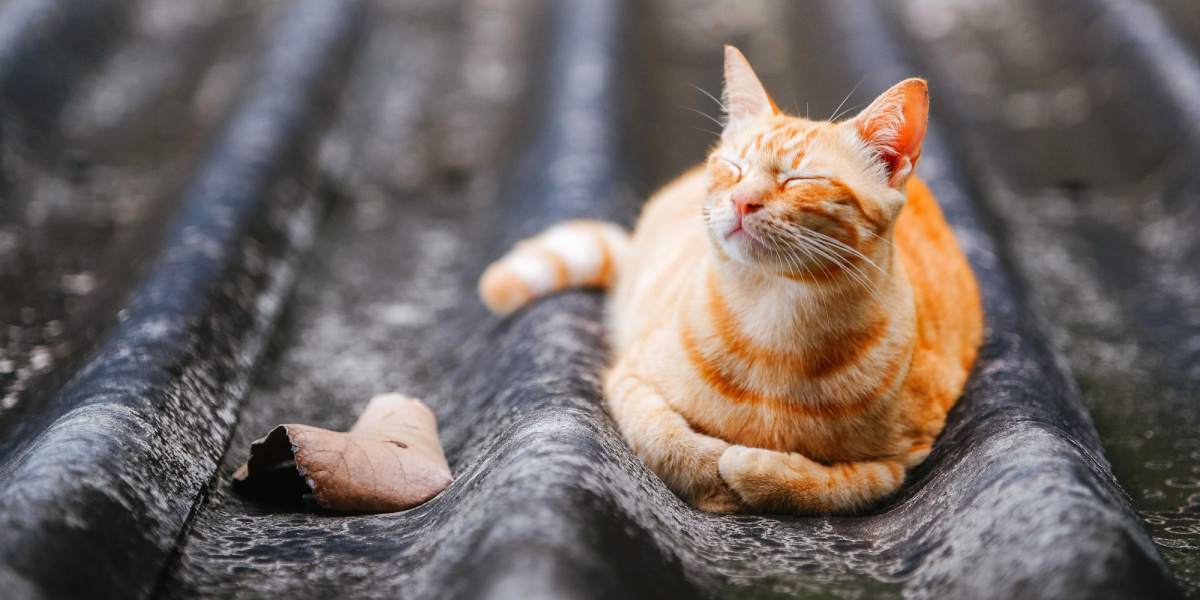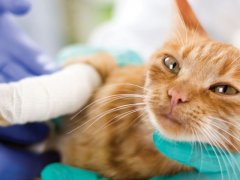
Cats originate from desert wildcats but they now live in many countries across the world. They live in various climates and have different lifestyles, such as living indoors versus outdoors. Cats are adaptable and resilient animals but that doesn’t mean that they can withstand extreme temperatures. So how cold is too cold for these once desert-dwelling creatures?
Contrary to popular belief, cats can easily get cold and even suffer from hypothermia in extreme conditions. Let’s discuss everything that you need to know about cats and cold weather now.
Key Takeaways
Cats can experience symptoms of hypothermia when the temperature drops below 45 F.
If you are feeling uncomfortably cold, your cat is likely feeling that way too.
You can help feral cats during cold spells by providing sheds and shelters with blankets and cat beds.
Normal Cat Body Temperature
As some of you may know, domestic cats originate from an African wildcat called felis Sylvestris lybica. This means that they lived in the desert and were accustomed to warm, dry climates. They now live all over the world and have adapted to living in many different temperatures.
However, cats don’t thrive in all temperatures. The normal body temperature of a cat varies from 100.5 F to 102.5 F. This can vary from cat to cat, but in general, if your cat’s temperature is higher than this range, they may have a fever. Similarly, if it’s much below this range, they are too cold.
A cat’s normal body temperature is higher than a human’s, which varies between 97 F and 99 F. Cats can begin to show signs of hypothermia if their temperature goes below 99 F. From this we know that cats like to live in the same temperatures that we do, but prefer it slightly warmer.
Also Read: Normal Vs Abnormal Body Temperature In Cats
Whatever is a comfortable temperature for you is likely to be similar for your cat. If you find a temperature too hot or too cold, your cat is probably feeling the effects of it too.
How Cold Is Too Cold for Cats?
Cats can tolerate many different temperatures, especially feral cats that live solely outdoors. They have thick coats that help protect them from the elements. However, temperatures below 45 degrees F are generally too cold for cats.
Below this temperature, cats start to feel the effects of hypothermia and are even at risk for frostbite. If the weather is particularly windy or wet and their fur gets wet, cats have an increased risk of developing hypothermia. They can become very cold even before the temperature dips below 45 F.
Many people probably wonder how this can be when commonly feral cats live outdoors at colder temperatures. It is true that feral cats often live in temperatures colder than 45 F. Some live in even below-freezing temperatures. Cats can live at these temperatures, particularly cats that are used to living outside and are more resilient.
But cats easily become unwell from this lifestyle and it’s uncomfortable for them to live in such cold conditions. It’s well known that cats that live outside have a shorter life expectancy than indoor cats. Extreme weather conditions along with the risk of injury and trauma are associated with this.
Inside the home, temperatures between 60 F and 70 F are often comfortable temperatures for cats. Temperatures below this begin to get chilly for them and they may seek out warm blankets to cuddle into or sit by the radiator.
Differences in Cats

Like people, individual cats have individual needs based on a number of factors about them such as age, breed, and coat type.
These temperatures are only a guideline and they won’t be the same for every cat. Certain factors affect the temperature that cats can cope with. These include the cat’s age, health, breed, and coat type. For example, cats that have health issues or are very young or old will be less likely to cope with colder temperatures. They may feel the effects of this even when temperatures are above 45 F.
Cats that are long-haired or have double coats are able to tolerate the cold more than breeds with short hair. Breeds such as the Maine Coon and Siberian cat can tolerate cold temperatures well while hairless cats such as the Sphynx are unable to tolerate colder temperatures and need to be kept indoors.
These factors need to be kept in mind when thinking of what temperatures are too cold for your individual cat. Older, sick, or hairless cats need extra warming during low temperatures and to be kept indoors. If you’re in doubt, get advice from your veterinarian.
Signs That a Cat Is Too Cold
Below 45 F, cats start to feel the effects of the cold temperatures. Cats with underlying conditions or that are older will feel them sooner. If your cat is cold, they’ll start to seek out heat and try to cuddle under blankets or sit by a heat source, like a stove or radiator.
If cats get too cold they’ll likely start to show some signs such as;
- Cold paws and ear tips
- Cuddling up into a tight ball
- Lethargy
- Shivering
Signs of severe hypothermia include;
If your cat is cold you need to warm them up. If they’re showing signs of hypothermia, you need to contact your veterinarian as soon as possible and follow their instructions.
How To Warm Up Your Cat
If it’s particularly cold outside, you need to try and keep your cat warm. Even indoors it can get very chilly with extreme outdoor temperatures. Use warm blankets and hot water bottles (with a covering), and crank up the thermostat if it’s very cold outside.
If you use electric heating pads or blankets, never leave them turned on when you’re not there. When cats are cold, they can burn more calories so you may need to feed them more cat food and even warm it up for them.
If your cat goes outdoors, keep them inside when it’s very cold. This won’t be possible with feral cats but it should be possible with cats that are tame.
Feral Cats in the Cold

There are steps that can be taken to try to care for feral cats when the weather is cold and harsh outside, such as shelters.
Feral cats live outside all year round and it isn’t possible to bring them inside as they would be too scared indoors. However, you can create some warm alternatives for outdoor cats during the winter months. Encourage them to sleep in a garage or shed by putting a warm, cozy cat bed and some yummy food in there. If they won’t go into a garage or shed, you can make a cozy insulated kennel or cat house for them to sleep in.
Feral cats need to be fed plenty of food during cold months to keep their strength up. Warm their food up to keep them extra warm.
To Summarize
Cats are resilient pets but this doesn’t mean that they’re immune to cold temperatures. They feel the cold just like we do and temperatures under 45 F are uncomfortable and even potentially dangerous for them. Encourage cats that go outside to stay indoors and provide plenty of warm beds. If you look after feral cats, encourage them to sleep in garages or sheds. If that fails, provide warm insulated cat kennels outdoors for them.
Cats that are cold should be fed plenty of food and you can warm this slightly to help keep them warm. Cats that are suffering from hypothermia will often be lethargic, cold to the touch, and stiff. Call your emergency vet straight away if you think your cat has hypothermia. Lastly, remember that if you feel cold it’s likely that your cat is too. Take the necessary measures to help them during cold spells.
Also Read: Cat Cold: Causes, Symptoms, & Treatment
Frequently Asked Questions
How do I know if my cat is too cold?
Cats will often be cold if temperatures outdoors are below 45 degrees F or if temperatures indoors are below 60 degrees F. They may cuddle up in blankets or feel cold to the touch. Provide plenty of warm beds and heat sources if it’s cold outside and encourage them to stay inside.
Are cats OK outside in the winter?
Feral cats live outside in winter and can be OK provided they have access to insulated cat houses and are fed plenty of food. Pet cats should be kept indoors when the temperatures are below 45 F.
What temperature is unsafe for cats?
Any temperature below 45 F can be unsafe and cause hypothermia in cats. Signs of hypothermia include shivering, feeling cold to the touch, lethargy, and shallow breathing. Call your emergency vet immediately if your cat is showing signs of hypothermia.
Will my cat be OK outside all night?
Some cats do stay outside all night but they are at increased risk of injury and temperatures are colder at night. Keep your cat inside at night time if you can.








This is really helpful, thanks